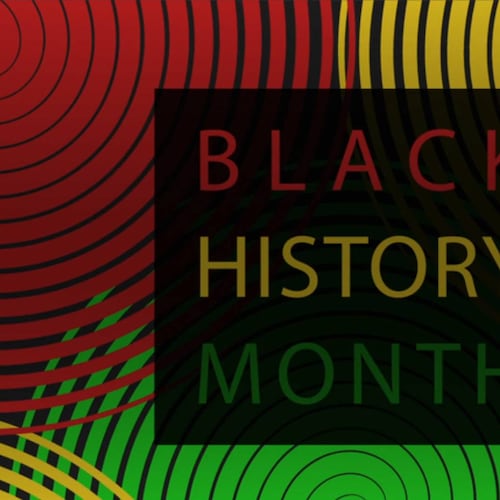Dan Moore moved to Atlanta in 1974, the same year that Maynard Jackson was inaugurated as the first Black mayor of a major Southern City.
He wanted to start a film company and saw Atlanta, with its people and culture, as the best place for a Black man to thrive. His Image 7 production company focused on documentaries and informational films. But his plans changed when he met educator Benjamin E. Mays.
“I asked myself, ‘Why doesn’t Atlanta have an African-American museum to honor people like Dr. Mays?’ " Moore would explain. “Who will remember all these great things he did? No one.”
In 1978, Moore did something about it.
He abandoned his dreams of making films and built the African American Panoramic Experience (the APEX), the city’s first and now oldest Black history museum.
“I was a filmmaker and had no experience in running a museum,” Moore said in 2023. “But I felt like preserving our history and our culture was far more important at the time.”
On Monday, Moore died of what his family said were natural causes. He was 88.
Credit: Moore Family
Credit: Moore Family
A visitation will be held Friday at 5 p.m. at Willie Watkins Funeral Home, 1003 Ralph David Abernathy Boulevard in Atlanta. His funeral will be Saturday at 11 a.m. at Midway Missionary Baptist Church, 2280 Godby Road in College Park.
Dan Moore was born on Nov. 20, 1935, to Edith Lillian Warring and Edwin Lewis in Philadelphia.
He was the youngest of 10 children. His commitment to uplift Black people came early from his father, who was described as a “proud Black man” and a follower of Marcus Garvey, a Jamaican political activist.
On his U.S. Army card, Edwin Moore, a veteran of World War I, scratched out Negro as his race and wrote, “African.”
“Being proud of his race was embedded in (Dan) without him realizing it until later on,” said Moore’s wife, Estella Moore.
Moore’s mother had Parkinson’s disease when he was young, which created in him a tenderness, family members said.
“Because of his mother, the respect that Dan had for Black females was amazing,” Estella Moore said. “He would come home from school and be scared to turn the corner not knowing if his mother had fallen.”
Moore attended The Edward W. Bok Technical High School in Philadelphia intending to be a tailor. He was also in charge of the film projector, which led to his introduction to movies. But after graduating from high school, Moore entered the ministry and toured the country preaching and evangelizing, while his first wife, Mae Adele Mallard Nzima, sang and played the organ.
In the late 1960s, during a period of social upheaval, Moore was approached by a local television station to produce a series of 30-minute programs. That led to his career as a filmmaker.
His first film was the documentary, “On Patrol for God,” filmed at a Christian rally he helped organize. Later, disgusted by the images of Africa portrayed in Tarzan movies, Moore went to Liberia to film “Welcome Home,” which was sponsored by the Liberian government on the condition that he return and make a second film. He did.
“When I got off the plane, I started crying,” remembers his son, Dan Moore Jr. “I felt this big heaviness. He said it was probably your ancestors.”
Three months before he moved to Atlanta, Estella, who had just graduated from the University of Pennsylvania, came to him looking for a job. They became good friends.
She told him that they were gonna get married. Moore, now divorced from his first wife, wasn’t interested in going down the aisle again. But they continued to talk long distance.
In June of 1982, Moore called Estella and asked “Will you roll with me?” Estella said yes and was on a plane to Atlanta the next day. They married on July 10, 1982.
Credit: Moore Family
Credit: Moore Family
Moore initially opened his museum on Ashby Street, before moving to the current location on Auburn Avenue in 1983. He always had big dreams for the scrappy APEX, which saw years of financial struggle due to wavering attendance and poor funding.
In 1997, staggering under $900,000 in debt, the museum filed for bankruptcy. Moore blamed part of it on expected benefits from the 1996 Olympics that never materialized. He reorganized the APEX.
It is located in a former tire warehouse in the shadow of the Auburn Avenue Research Library. Annually, more than 60,000 people file through the 7,500-square-foot, three-gallery museum.
Its walls are lined with huge replicas of slave auction notices and slave inventory records. There is a replica inside of an old soda shop and drug store, as well as a popular exhibit on Black inventors.
There is also a replica of the infamous “Door of No Return,” in Africa, which the enslaved are said to have walked through while being loaded into slave ships. That exhibit leads to a dramatic replica of a ship, where mannequins are pressed tightly against each other, shackled at the ankles and necks.
Credit: Akili-Casundria Ramsess
Credit: Akili-Casundria Ramsess
Beyond the exhibit is a rendering for a new $30 million interactive APEX. Moore had said the proposed 90,000-square-foot state-of-the-art museum, complete with a 20-foot-high pyramid and robotic exhibits, was going to “be like Epcot.”
But it was often hard to compete for dollars against newer, shinier museums like the Center for Civil and Human Rights. Dan Moore Jr., will take over the museum and continue to work on his father’s dream.
“He was a Renaissance man,” Estella Moore said. “He came up hard and he worked hard. I have never met a man of such character. Dan was the best man I ever met in life.”
Moore is also survived by another son, Edwin Moore; six grandchildren; 18 great-grandchildren; and three great-great-grandchildren.
About the Author
The Latest
Featured






